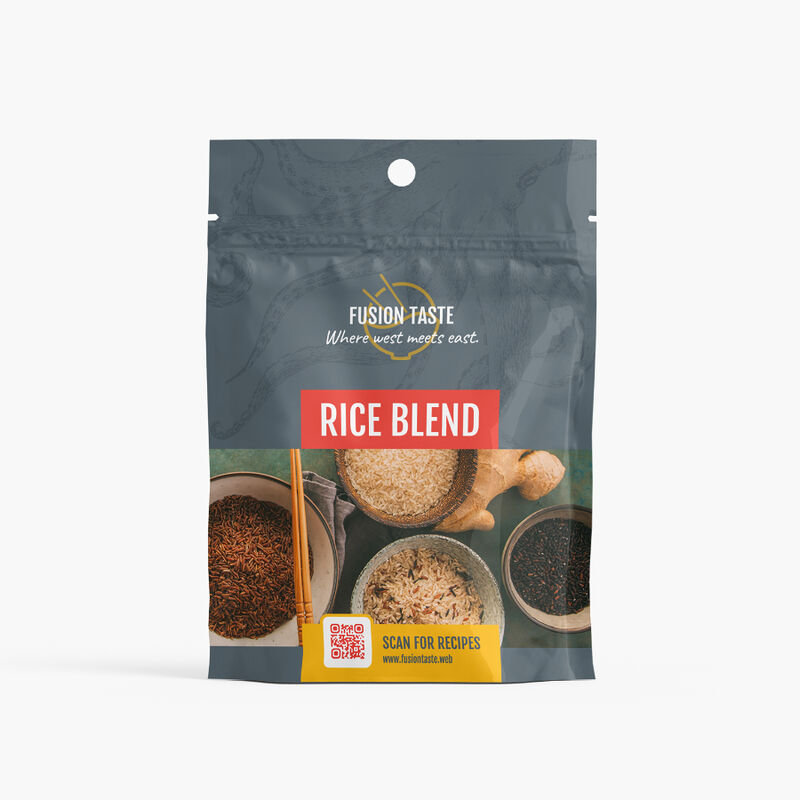Marketing a business is a mammoth task. But more than that, it’s a dynamic, ongoing journey involving online and in-person marketing strategies. If you’re struggling to think up ways to market your business that won’t break the bank, we’ve put together a list of 24 small business marketing ideas—no expertise or massive budgets needed. The list below involves everything from digital tips to traditional, tried-and-true methods.
1. Optimize Your Business Website
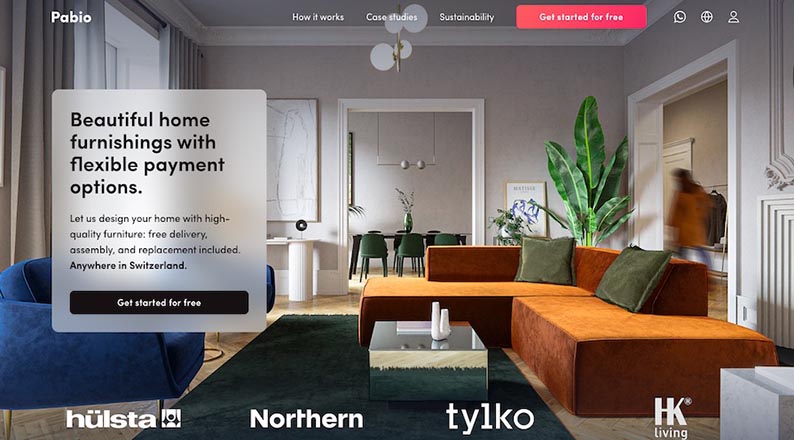
A well-optimized and well-designed website like this will help you rank higher on search engines. (Source: Pabio)
You probably know that a business website is invaluable. But creating one is only half the journey. The other half is ensuring it’s professional, visitor-ready, and discoverable online. Maintaining your website is an ongoing process, and there are lots of ways to make a good website. But there are a few things you can do to keep your site healthy and optimized.
- Use a custom domain: Your website domain appears in the URL when people visit you online. It’s essentially its address in the online space. Having a custom domain instead of a generic one (i.e., yoursite.wix.com) makes it far more professional and credible and signals that your site is ready for business.
- Add keywords to your site copy: Keywords help your website get found by people looking for your products or services. Use keyword research tools like Semrush to determine the best keywords for your business and then add them to your titles, copies, or even your blogs (more on this below).
- Be sure it loads fast: Site load speed is a key factor in SEO. The faster your site is, the more likely people will stay on it. You can ensure your site loads fast by compressing large image files and limiting high-bandwidth elements like JavaScript or CSS files.
- Add your brand assets: Your website is the foremost way to promote your brand online. So it needs all your essential branding assets, like your logo, brand colors, business information (i.e., your location and contact details), and your favicon.
2. Start a Blog to Answer Your Audience’s Questions
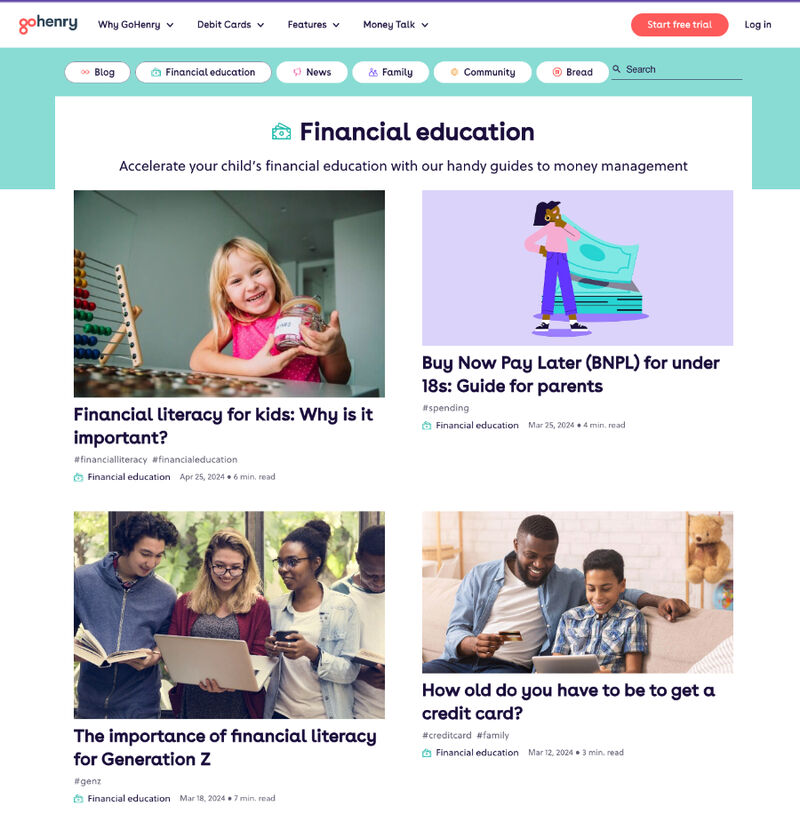
Blogging is the cornerstone of content marketing and can help your brand get discovered online. (Source: GoHenry)
Blogs aren’t just a means to share discussions with your audience. They’re also an effective way to increase your search engine rankings through keywords and build your brand authority and credibility in your topic area. In fact, blogging is the cornerstone of content marketing.
In particular, good blogging should answer your target audiences’ questions, concerns, and interests to keep them engaged. You can do this by building a carefully researched SEO content strategy that centers on your audience’s interests and needs.
3. Create Customer Personas for Laser-focused Campaigns
How to build a customer persona (Source: Fit Small Business)
If there’s one way to cut through the online noise and get your brand in front of the audiences that matter, it’s by having well-defined customer personas. Customer personas are profiles representing your main customer types (or the types you most want to target). They include demographic characteristics such as location, education, age, income, interests, hobbies, job titles, and more.
The details making up your customer persona will shape the marketing channels you use to reach them, the messaging of your campaigns, the visuals you use, and so on. Having a clear idea of your customers’ needs, pain points, and interests will help you craft laser-focused marketing strategies that resonate more effectively and potentially save you lots of cost and effort later on.
4. Develop a Signature Visual Brand Style
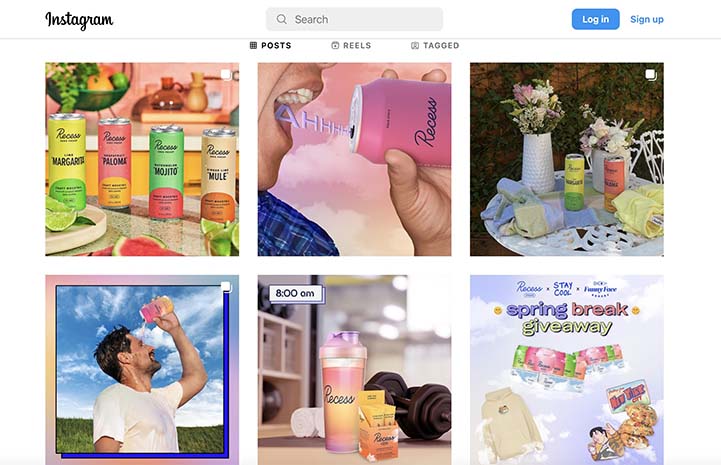
Here’s an excellent example of an easily identifiable visual brand style. (Source: Recess via Instagram)
Developing a signature visual style makes your brand easier to identify, helping build your brand presence—especially in today’s visual-centric digital world. A good example of a business that does this well is the beverage brand Recess. One look at its content, and you can easily get a sense of its youthful, vibrant personality.
Think of how many products or companies you can identify visually through their marketing materials. From McDonald’s golden arches to the iconic Coca-Cola font, brands that create memory points like these are more likely to stay top of mind. Together, these elements make up a brand identity—another key element in helping buyers recognize your business.
5. Get on the Map With a Google Business Profile
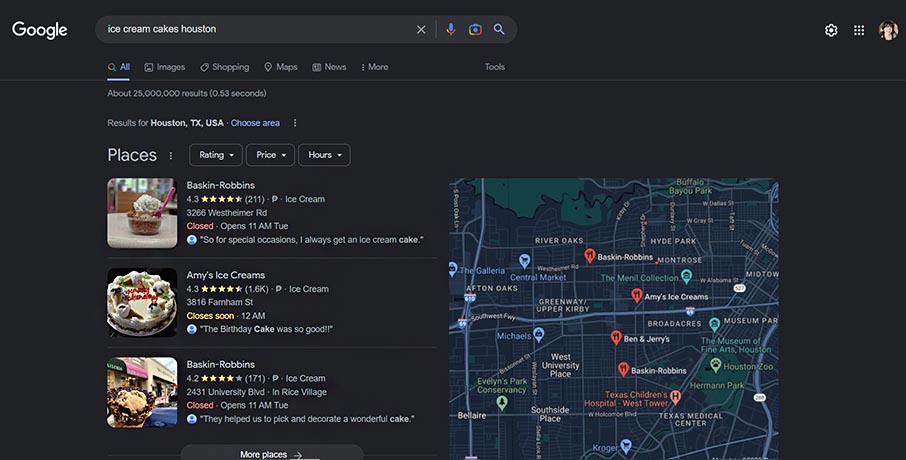
Google Business Profile precedes ads and is key for getting found locally. (Source: Google)
Google rules the realm of online search. But it is a benevolent ruler, providing free tools for analytics and trends and a free Google Business Profile (GBP) for all. Formerly known as Google My Business, a GBP is essential for ranking organically in local Google search results. It can help you get found by people in your area looking for your products or services online.
If you don’t already have one, learn how to set up a Google Business Profile and optimize it to ensure your business can be found in an online search. Then, get more Google reviews, so your profile ranks higher in organic search results. The more reviews you have, the higher your profile’s credibility and ranking.
6. Focus on the Social Platform Your Audience Loves Most

An example of a brand that’s leveraged social media successfully (Source: TikTok)
It’s no secret that social media has some of the best low-cost marketing ideas for small businesses. However, a common mistake is trying to be active on every social platform. In reality, less is more when it comes to social media marketing. Instead of spreading your brand too thin on too many channels, focusing on the platform where your audience is most active will more likely get more returns.
For example, a digital marketing service for tech companies can build their brand awareness on LinkedIn to reach business owners and tech professionals. Meanwhile, a D2C beauty brand might find its audience on TikTok.
Spend time researching your audience (hint: use your customer personas as a guide) to figure out their online interests and behaviors. Maybe your target customers are active on X (aka Twitter). Maybe they’re more visual-oriented and prefer Instagram and Pinterest. Focusing your efforts on the one or two best platforms for your business will help you build a steadier stream of engagement.
7. List Your Business in Online Directories
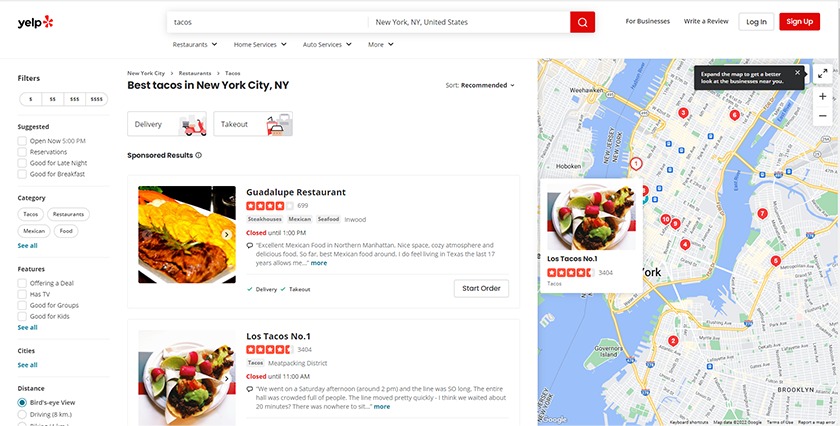
Online business directories are an established way for local customers to get to know your brand. (Source: Yelp)
When it comes to cheap and effective marketing ideas, the best tip is to leverage all the available resources around you. One good example of such a resource is an online business directory like Yelp or the Yellow Pages. Directories like these have the express purpose of helping small businesses like yours get discovered by the local community.
There are many online business directories you can list your business on, from Yahoo Business Listings to the Better Business Bureau (BBB), and you only need to choose the best ones for your business. Not only do these directories help you gain new customers, but they also help boost your local SEO and bolster your brand’s credibility.
8. Host Social Media Q&As and Other Behind-the-Scenes Content
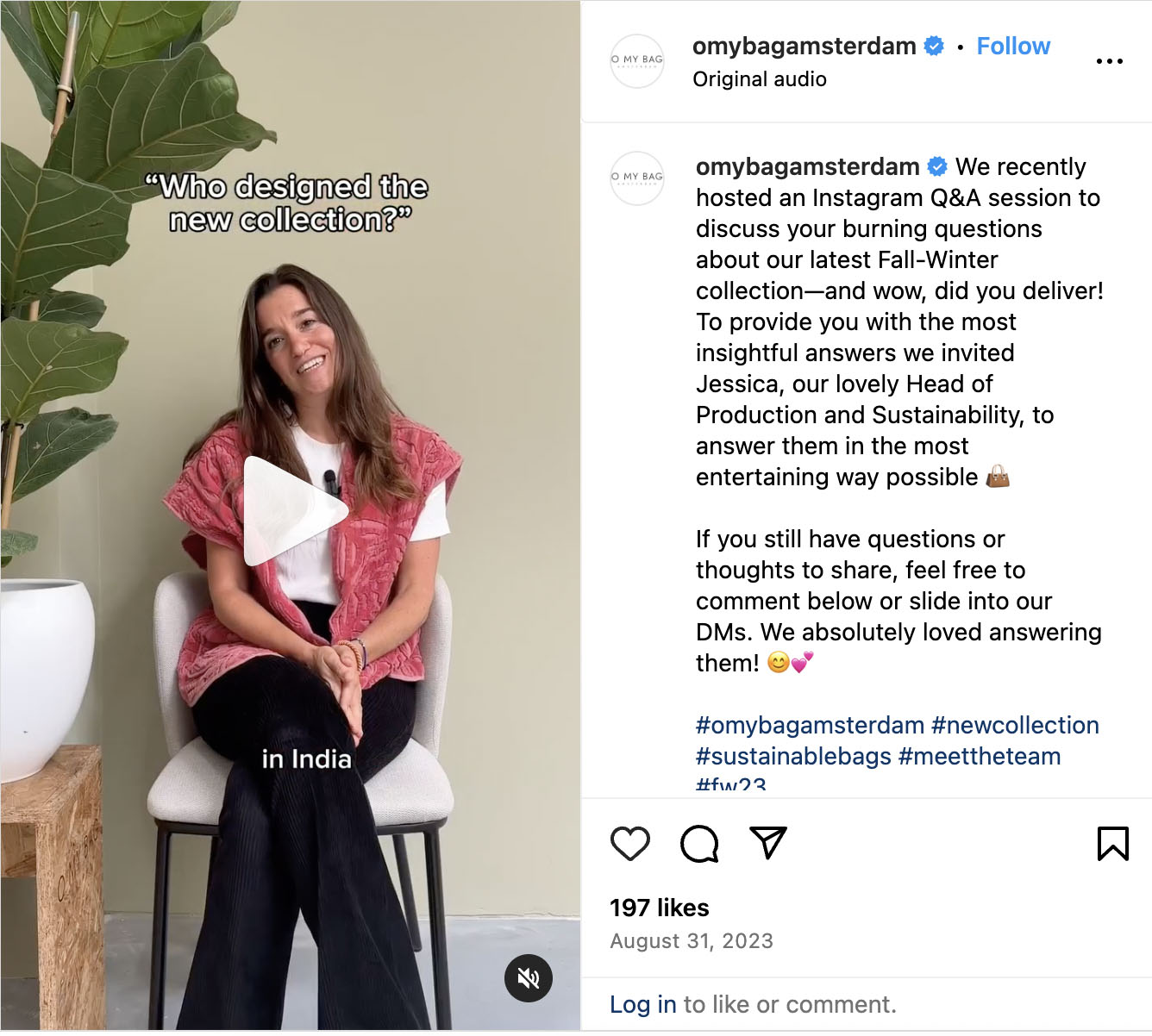
Live Q&A sessions are one of the best content marketing ideas for social media. They offer a personal way of connecting with your audience. (Source: Instagram)
Anytime anyone asks for cheap creative marketing ideas, I always turn to social media for inspiration. That’s one of the best things about social media: it’s endlessly creative and is the best avenue to showcase your brand’s authentic voice and personality.
One of the best ways to do that today is by producing videos showcasing behind-the-scenes content about your brand. For example, shoot Q&A videos with influential team members or showcase a day in the life of working at your business. Organic, on-the-ground videos like these help showcase a more well-rounded view of your brand, especially as today’s audiences prefer authentic-feeling videos over highly produced ones.
9. Look Into Referral Marketing

An example of a referral marketing campaign (Source: Lightspeed)
The best low-budget marketing campaigns always harness the power of community. One example is referral marketing campaigns, which are especially helpful for garnering customers in the earliest stages. This is because referrals are a form of word-of-mouth marketing that leverages people’s social circles. Plus, referral programs are versatile. You can set them up via social media, email, or direct mail.
10. Hold Online Contests and Giveaways
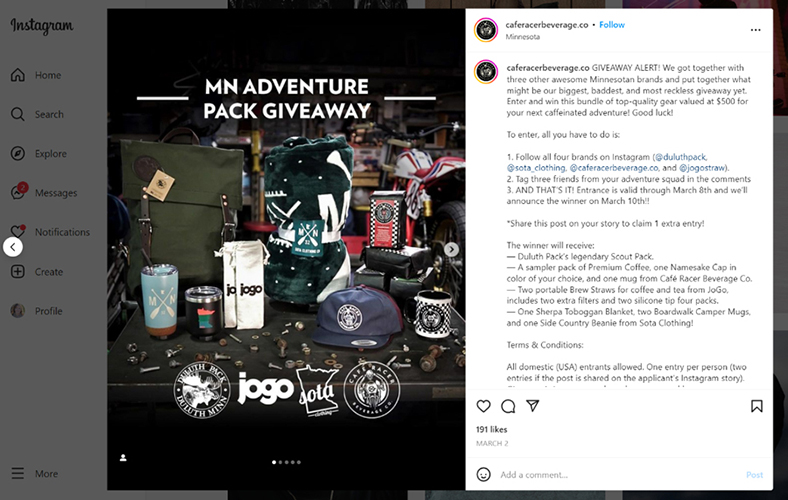
Giveaways like this can get your brand engagement on social media. (Source: Instagram)
Online contests and giveaways are reliable sales promotion ideas to garner engagement for your brand on social media. Like referrals, they also harness the power of community. Everybody likes a freebie, so a contest is usually a low-barrier-entry way for many people to get to know and interact with your brand. Plus, they’re a great way to collect UGC, aka user-generated content.
Simple contests include raffle-drawn giveaways, tag-a-friend mechanics, or hashtag contests where users post content about your brand on social media using a specific hashtag. Contests like these can instantly get you wider brand exposure. However, make sure to plan and communicate your mechanics clearly to avoid a social media blunder. When done right, giveaways and contests can turn your casual followers into loyal fans.
11. Engage With User-generated Content

Engaging with content from your followers helps you form closer connections, like this example of the Airbnb account retweeting a follower’s post on X (Twitter). (Source: X)
People trust other people more than they trust brands. So you must present yours as a business that isn’t just looking to score a sale but has a trustworthy presence that people look forward to interacting with. One of the most authentic ways to build your brand is by leveraging user-generated content marketing.
UGC is any content your customers create and share that mentions your brand—and it’s one of today’s most cost-effective ways to advertise your business (it usually won’t cost even a penny). Plus, UGC is driven by authenticity, so it also helps build more brand trust. One of the best ways to start with UGC is by interacting with or resharing your followers’ content on social media that mentions your brand. Find out more ways to leverage UGC for your business.
12. Host Webinars and Other Online Events
Live events like webinars are a tried-and-true method to grow your brand awareness—and generate new leads. (Source: Vitality UK via YouTube)
Live events are some of the best small business marketing ideas because they give you real, meaningful person-to-person interactions with audiences. One of the best types of events you can host is a webinar. They can be educational or instructional, as long as they’re genuinely relevant to your audience. For example, a sustainable fashion line might discuss the growing importance of a sustainable fashion model.
Webinars are a way to help generate leads from your audience, but more than that, they establish your business as a credible authority. They show that you’re an expert in your subject matter and, therefore, a trustworthy source. Most times, people who attend webinars are already generally interested in the subject you’re covering, so they also make for high-quality leads.
13. Enter Your Business in “Best of” Contests
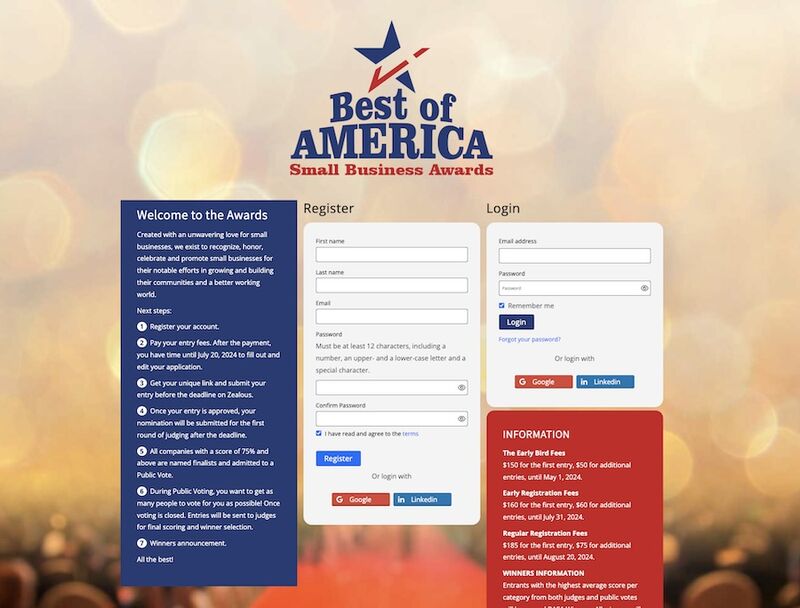
Contests like the Best of America Small Business Awards can get exposure for your brand. (Source: Best of America)
If your company is awesome, let the whole world know. From the best place to eat, shop, or be entertained to the best place to work, entering a “best of” contest in your city or zip code can garner more brand awareness and sales for your small business.
Generally, it starts with submitting an entry form (or having someone nominate your business) to the contest holder. You can find contests online by joining Facebook communities in your area, exploring websites specifically for your location, or following local government units.
Once the contest begins, implement marketing campaigns to drive traffic to the contest site to get votes from customers, employees, and others who like your brand. You can do this across many channels, including social media, email marketing, website popups, direct mail, customer receipts or invoices, and so on.
14. Start Email Marketing Campaigns
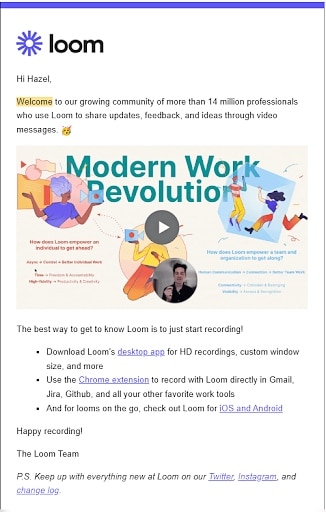
Email marketing can be one of your most cost-effective strategies. Here’s an example of a welcome email for new customers. (Source: Loom)
Like social media, email marketing is another staple for low-cost small business marketing ideas. However, it all comes down to using it effectively. For instance, if you’re only sending the obligatory monthly blast, chances are you don’t see a lot of conversions and sales.
There are dozens of other ways to use email for marketing. You can send drip emails to lead prospects through the sales funnel or send out upselling or cross-selling emails after a customer has completed a purchase. Increase your customer engagement with the best email marketing campaigns.
15. Publish Press Releases for Newsworthy Announcements
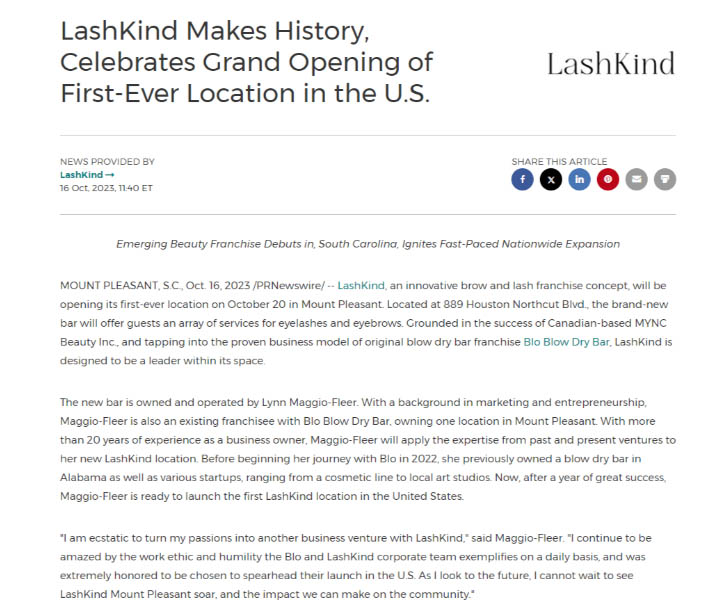
An example of a press release for a grand opening (Source: LashKind)
If you want to build brand credibility and a positive reputation, write a press release. This is especially true if you have a newsworthy announcement, like a store opening or a new product launch, that you want your community to know about. After writing your press release, you can send it out through a press release distribution service that can get you placements in local media outlets.
Then, once your press release is published, share it on your social media accounts for even more exposure, and host it on your business website under a “Press” page. Optimize your press release for coverage with our list of press release distribution tips.
16. Network and Keep Your Business Cards Handy
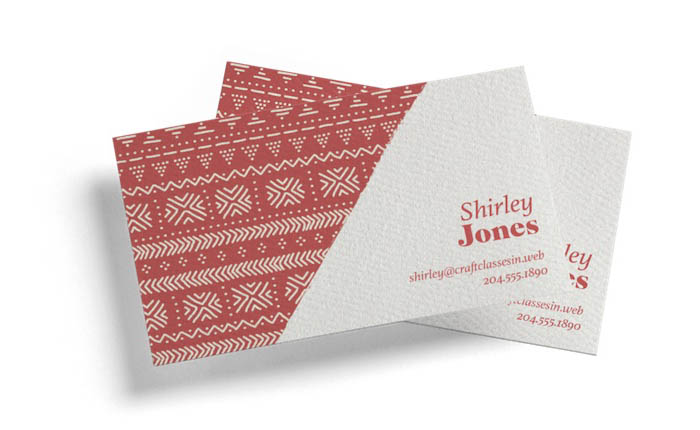
Business cards are essential in small business networking. (Source: VistaPrint)
Building a strong professional network is key to growing your business’s brand presence. You can establish valuable connections by attending industry events and functions where you’ll find potential business opportunities and leads.
When networking, always bring a stack of business cards with you. Business cards are a long-held business staple and are generally expected at networking events. When designing your business card, make sure it represents your brand and has all your essential contact details.
But don’t go overboard and try to add everything, either. Add your name, title, two or three ways to contact you, and, if needed, a short call to action. For more inspiration on how to create a good business card, read through our list of the best business card ideas.
17. Add QR Codes to Your Product Packaging
If you’ve ever used a QR code, you know how handy and efficient they are. QR codes can connect real-world experiences with digital ones. They can instantly transform a regular experience, like signing up for an event or reading details about a product, into an engaging and memorable experience.
And the best part is that they’re easy and usually free to set up. Many QR code generators only require you to add your destination link or document, and your code will immediately be ready to download and use.
I particularly like using QR codes in product packaging because they give customers an extra experience post-purchase, extending the customer journey further and boosting customer retention. Your QR codes can lead to details or instructions about the product they just purchased, a satisfaction survey, or even links to your social media pages. The possibilities are plenty.
18. Attend Local Trade Shows and Small Business Fairs

Small business events like the Small Business Expo are a great way to connect with fellow entrepreneurs. (Source: Small Business Expo)
As mentioned above, networking is key to making your brand known to your local community. In fact, it’s an integral part of small business marketing. One way to expand your network further is by joining small business-centric events like trade shows and fairs. Events like these are catered specifically for small businesses to network with and are therefore usually free or inexpensive to join—making them one of the best cheap marketing ideas.
Conduct an online search for small business events in your area or follow touring events like the Small Business Expo. Of course, bring your business cards and your small business sales pitch.
19. Collect and Display Customer Reviews
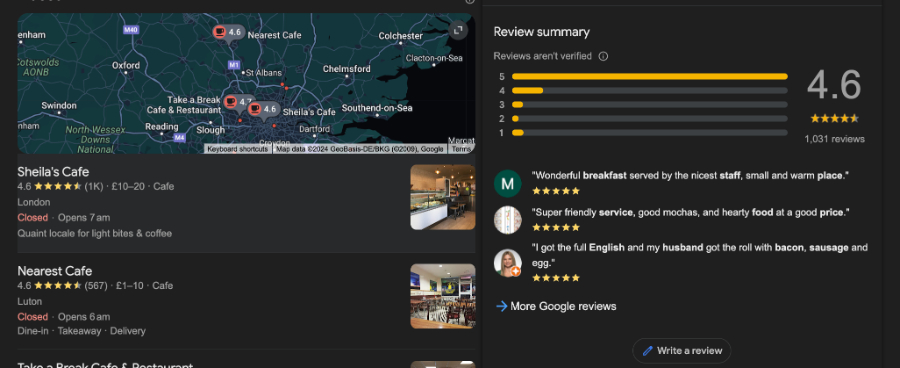
Positive customer reviews can instantly boost your brand’s online reputation. (Source: Google)
Cost-effective marketing doesn’t mean inefficient marketing. On the contrary, one of the humblest advertising ideas could potentially bring the highest returns for your business: customer reviews. If you’ve ever been convinced to buy a product based on a good review from a customer, then you know how powerful reviews can be for your business.
There’s also data to back that: A 2023 study found that 84% of people are more likely to trust reviews from fellow customers than brands or industry experts. Reviews act as social proof that signals your brand’s credibility to audiences.
Plus, they’re easy to set up and won’t even cost you a penny. You can ask customers to leave reviews on your Google Business Profile (especially if they’ve had a positive experience) or on your Yelp or Facebook pages if you have them.
20. Get Free Google Ads Credits

Google Ads’ landing page with a promo or $500 in free ad credits (Source: Google)
Google ads are generally one of the most inexpensive ways to advertise your business, but sometimes they can even be completely free. Google frequently gives away free credits you can use for your ad campaigns. For example, Google currently offers $500 worth of credit when you spend $500 in your first 60 days. Spend more on ads to earn up to $1,500 in credits.
If you’re new to Google Ads, learn more about how to leverage them for your business. With the right know-how, they can get your business in front of thousands of interested audiences.
21. Share Infographics to Educate People About Your Business

An infographic template example from Canva (Source: Canva)
Infographics aren’t only an engaging piece of content, they’re also a great way to tell a lot about your business in a small space. They communicate complex ideas and information in an easily digestible format, which can be very helpful for educating audiences about your product or service.
Infographics come in many shapes and formats. And you can share them on nearly any marketing channel, from social media to email marketing. However, they’re also popular and are used by many other businesses. To keep your infographics impactful, reserve them for your most valuable insights—for example, research results or product information.
22. Leverage AI to Automate and Generate Content
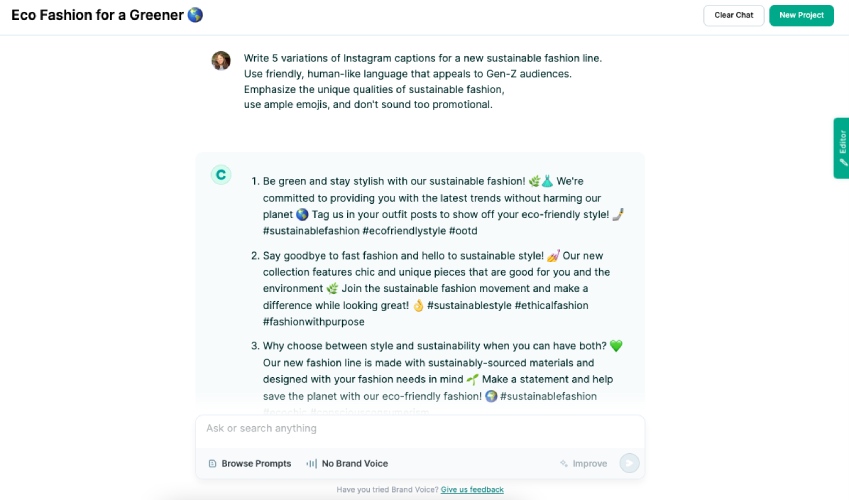
AI tools like Copy.ai can help you create content for captions, blogs, and social media posts. (Source: Copy.ai)
By now, you’ve probably heard of artificial intelligence (AI) from Meta and Google. But the good news about AI is that it isn’t just for these big players—there are plenty of ways you can use AI in marketing, too (in responsible ways). One of the best ways is to generate content more efficiently. AI content generation tools can create everything from blog post outlines to social media captions.
23. Explore Coupon Marketing
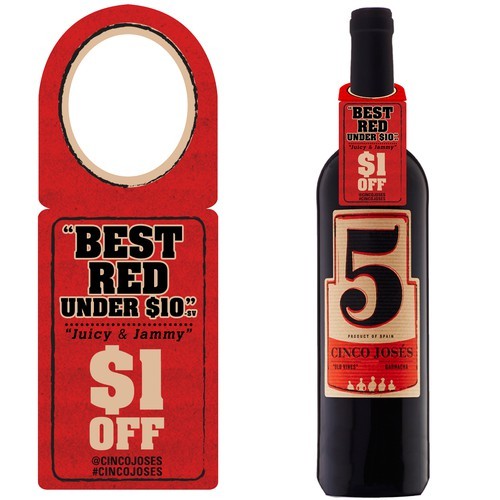
Coupons can be creative, like this example from a wine brand. (Source: 99designs)
Coupons are a great way to attract new customers and encourage repeat business because everyone loves coupons. Coupons make customers feel rewarded and, at the same time, give them a sense of urgency, and they’re especially helpful for building customer loyalty.
Overall, coupons are one of the best low-cost strategies to advertise your business. To create a successful coupon ad campaign, develop a coupon marketing strategy, create the coupons, distribute them to your customers, and then track the results to see how you can improve it. For more inspiration, check out our list of coupon marketing ideas and examples.
24. Send an Every Door Direct Mail (EDDM) Campaign

An example of an EDDM postcard (Source: Postcard Mania)
Every Door Direct Mail (EDDM) is a direct mail campaign you send to every address within a specific area or zip code. They’re a great way to grow awareness about your brand in a certain community, especially if you have a brick-and-mortar store. They can also help you generate that all-important foot traffic, especially if you offer a little extra incentive, like a new customer discount.
One of the best things about EDDM campaigns is that they’re simple and cost-effective. It’s usually a matter of designing your postcard (or using a premade template), choosing your distribution area, and launching your campaign. Many direct mail services offer EDDM campaigns that often only go for a few hundred dollars at most.
Frequently Asked Questions (FAQs)
To market a small business, start with a marketing plan. List your objectives and key performance indicators (KPIs), then identify the best marketing campaigns for them. For example, a B2B business might use digital marketing strategies, while a local cafe might use more traditional methods. Also, research your target audience to identify the best way to reach them. After launching your campaigns, always keep track of them through metrics.
The best marketing strategies for small businesses depend on your main objectives, but they’re usually a combination of traditional and digital methods. A local corner cafe might employ more traditional strategies, while a tech startup might favor digital methods. However, some nonnegotiable marketing strategies for any business include building a brand identity with a mission, vision, and values and creating a business website.
The first step to marketing your small business is developing your core brand identity, which starts with your mission, vision, and core values. These are the core pillars guiding the rest of your marketing communications. Then, develop the public assets of your brand identity, like your logo, color schemes, and brand voice. You can also create a brand positioning statement and story to differentiate yourself from competitors.
Research your target audience to identify the best ways to reach them, whether on digital platforms or traditional avenues. Some small business marketing ideas you can explore are building a website, posting on social media, or using traditional methods like direct mail and billboards.
Bottom Line
Marketing a small business is a dynamic, ongoing journey. There are countless ways to help the world discover your brand. But if there’s one thing to keep in mind, it’s that your audience should always be the beginning and end point of all your campaigns. If it’s in your audience’s best interest, it’s in your business’s best interest. Use the small business marketing ideas above to get started.

